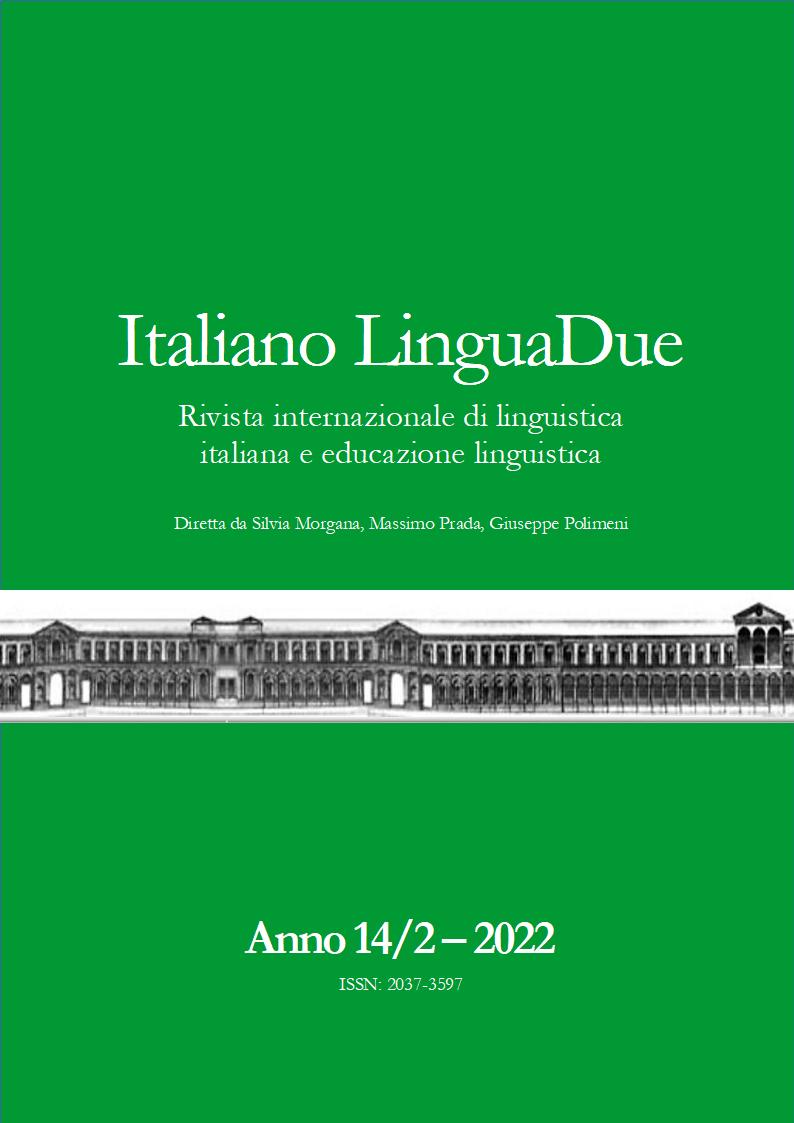BEYOND MONOLINGUALISM: A VIEW FROM THE PAST
DOI:
https://doi.org/10.54103/2037-3597/19612Abstract
The 21st century is often dubbed as the era of multilingualism in applied linguistics and language teaching, in contrast to the previous century, when the monolingual approach prevailed. The importance of this paradigm shift cannot be overestimated as it is also enshrined in the recently compiled Companion to the CEFR. However, the multilingual approach has a long history and arguably underpins several language teaching textbooks that rely on the learners’ L1 as a bridge to the L2 and as such are associated with the often reviled Grammar Translation method. Recent research has shown that the negative portrayals of L1 use and translation as featured in historical language teaching materials are based on second-hand information, and close analyses of these pedagogical materials may provide a different picture. Against this background, this article focuses on a corpus of English language materials published in Italy in the 20th century, an area of investigation that is still under-researched. The analysis shows that the learners’ L1 – Italian – is extensively exploited across the corpus, although the impact of the monolingual paradigm can be detected in the more recent materials. Several instances were found in the corpus where the L1 acts as a cognitive, cultural as well as linguistic mediation tool, in ways that are not far removed from what is envisaged in the CEFR Companion.
Oltre il monolinguismo: uno sguardo al passato
Il XXI secolo è spesso definito come l’era del multilinguismo nella linguistica applicata e nell’insegnamento delle lingue, in contrasto con il secolo precedente, in cui prevaleva l’approccio monolingue. L’importanza di questo cambiamento di paradigma non può essere sopravvalutata, in quanto è sancita anche nel Volume Complementare del QCER, recentemente pubblicato. Tuttavia, l’approccio multilingue ha una lunga storia e probabilmente è alla base di molti libri di testo per l’insegnamento delle lingue che si basano sulla L1 dell’apprendente come ponte verso la L2 e che, in quanto tali, sono associati al metodo della traduzione grammaticale, spesso vituperato. Recenti ricerche hanno dimostrato che le rappresentazioni negative dell’uso della L1 e della traduzione presenti nei materiali storici di insegnamento delle lingue si basano su informazioni di seconda mano e che un’analisi attenta di questi materiali pedagogici può fornire un quadro diverso. In questo contesto, il presente articolo si concentra su un corpus di materiali in lingua inglese pubblicati in Italia nel XX secolo, un’area di indagine ancora poco studiata. L’analisi mostra che la L1 degli apprendenti – l’italiano – è ampiamente sfruttata in tutto il corpus, anche se l’impatto del paradigma monolingue può essere rilevato nei materiali più recenti. Nel corpus sono stati individuati diversi casi in cui la L1 agisce come strumento di mediazione cognitiva, culturale e linguistica, in modi che non si discostano molto da quanto previsto dal Companion del QCER.




